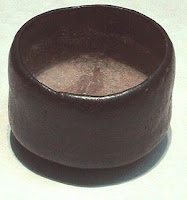It is not always possible to train directly for what you desire. The whole premise of tai chi chuan is based on this quirk of existence. For example, if we want to be quicker than our opponent, we will need to train sensitivity to movement and balance. We can't just practice a technique more and more quickly, because more crucial than "mathematical" speed is our ability to read the timing of the opponent. We can make ourselves stronger in training, but the best sort of strength is not the kind that we deploy, as if we are lifting weights, but is rather more a habit. We don't want to "use" strength so much as have it appear as the result of good body mechanics and unified force. So to get usefully strong, we have to learn to relax in order to allow the body to work as a unit, and we have to have enough tactical ingenuity to get our feet, hips and the rest into the right position.
Tai chi chuan is full of this style of "indirect" learning, the sort of learning which Daniel-san went through in the Karate Kid with "wax on, wax off". On one level, it is quite useful to go through the motions, to repeat movements over and over with little regard for their context or use, because once the idea of a martial application is brought in, people add lots of their own strange ideas into the mix. They also tend to worry too much about which foot to step with or how to hit someone, rather than just stepping and just hitting. This indirect learning can be a smokescreen for charlatanism also, where the teacher knows a lot of empty forms but hints at "secret" knowledge being imparted at some stage. This is how we end up with people who practice the handform, thinking that this alone will suffice in a physical conflict. Indirect learning must be complemented with a full and realistic view of actual martial situations.
Another sort of indirect has occurred to me, in the form of weapon practice. The weapons in themselves appear to be outmoded, and impractical: who's going to ever come at you with a sword? But the skills learnt in the handling and sparring with weapons feeds in directly to our pool of empty-handed skills, perhaps without us knowing: spear co-ordinates both hands together and informs our grappling. Sabre trains us to move directly in for the strike, thus closing distance with an assailant. Sword causes us to move hand and foot together, to turn aside force, and to keep moving with delicate footwork. These are all things which will apppear in our empty-hand work, so long as we know and practice the weapons forms sufficiently, and give a little thought as to how the syllabus all hangs together, and how all the disparate elements feed into the centre to create the tai chi chuan body.
Zen for even harder times
4 years ago
























